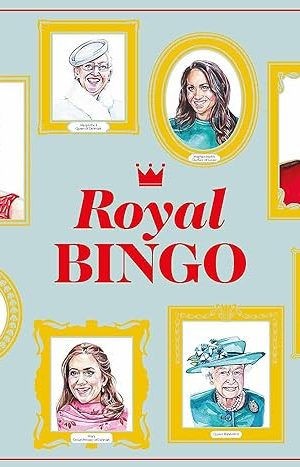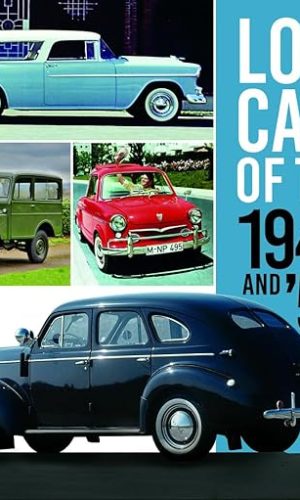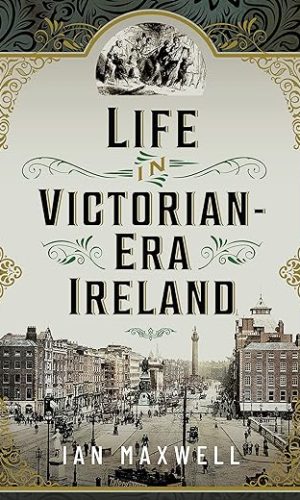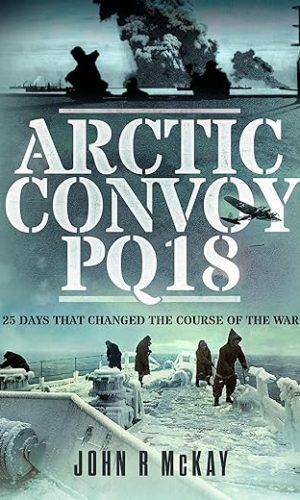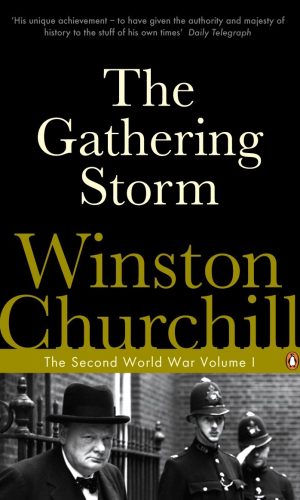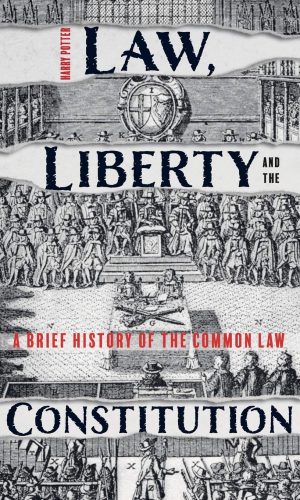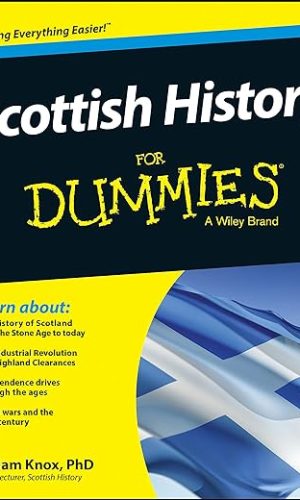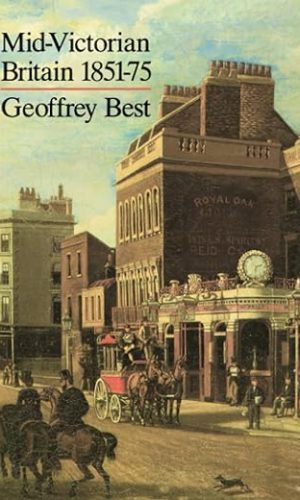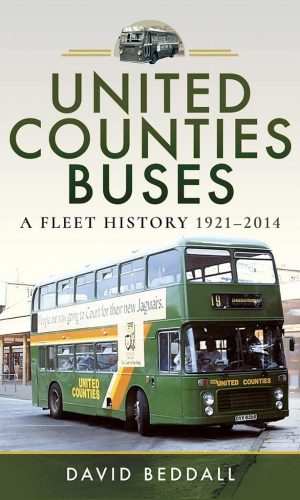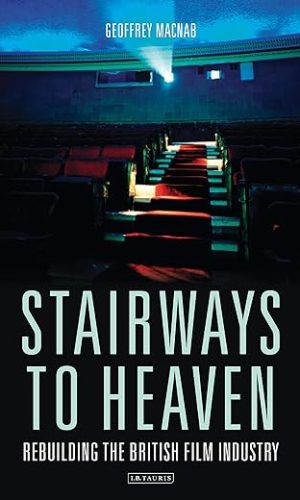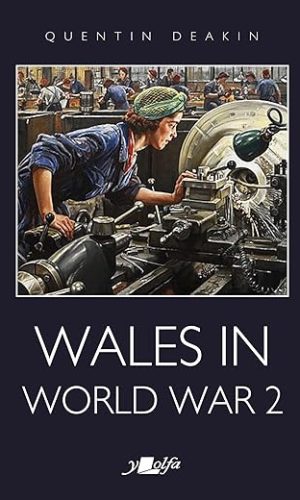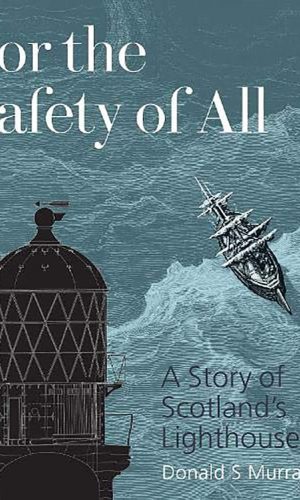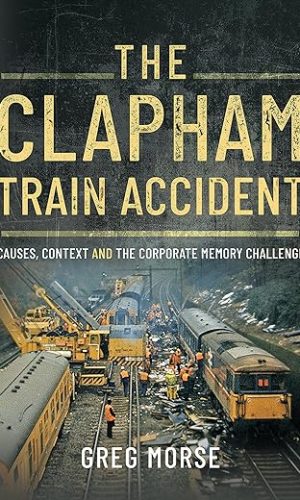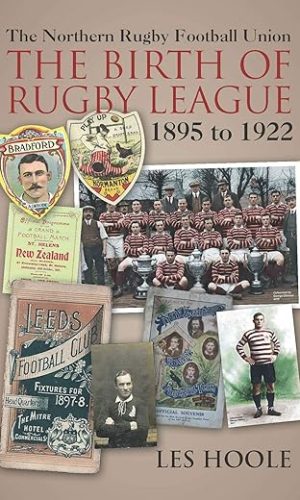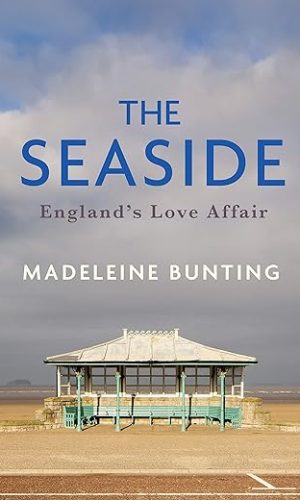Europe
-
The Band That Went to War: The Royal Marine Band in the Falklands War
The Royal Marines are renowned for their military skill and also for having one of the finest military bands in the world. These highly trained and talented musicians are equally at home parading at Buckingham Palace, playing at the Royal Albert Hall, or on the flight deck of an aircraft carrier in a foreign port. Why then when the Argentines invaded the Falklands in April 1982 did these superb musicians get involved in what became a serious and deadly military campaign? The answer is that, in addition to their musical expertise, the RM Band Service members are trained for military service and fully qualified in a multitude of military and medical skills, providing support to their comrades, the fighting commandos. The Band That Went to War is a graphic first-hand account of the Falklands War as it has never been told before. It describes the roles played by Royal Marine musicians in the conflict; unloading the wounded from helicopters, moving tons of stores and ammunition, burying their dead at sea and guarding and repatriating Argentine prisoners of war. These and other unseen tasks were achieved while still ready to provide morale boosting music to their commando brethren and other frontline troops. These men are not just musicians; they are Royal Marines.Read more
£18.00£23.80 -
Royal Bingo
This majestically illustrated bingo game features portraits of 64 royal icons from around the world. Spot famous faces like William and Kate, or meet some less familiar figures such as the playboy prince Wenzeslaus of Liechtenstein. Royal Bingo brings a fun twist to the traditional game, with all the European royal families represented, along with some more exotic courts such as Jordan, Brunei and Malaysia. Each royal is further brought to life in the accompanying booklet, which details their personalities, foibles, gaffes and romances. Who will reign supreme?Read more
£17.50£19.00Royal Bingo
£17.50£19.00 -
Lost Cars of the 1940s and ’50s
Sixty diverse cars, sixty fascinating stories, sixty contrasting specifications, just one uniting factor: they’re all forgotten, neglected or misunderstood classics.
Motoring in the 1940s and ’50s spanned from post-war austerity to the you’ve-never-had-it-so-good era. It was a time when engines gained more power, suspension became more cosseting, the chassis frame was rendered a thing of the past, and styling followed jet fighters and later space rockets. Many cars found success across the world, but others barely got off the ground and quickly vanished from our collective consciousness.
In Lost Cars of the 1940s and ’50s, award-winning author Giles Chapman presents an all-new selection of the intriguing strays of the car world. Rarely seen archive and contemporary images bring daring new designs, economy models and some extraordinary luxury cars back to life … even if they misfire once again in the process.
Read more
£17.40£19.00Lost Cars of the 1940s and ’50s
£17.40£19.00 -
Life in Victorian Era Ireland
There are many books which tackle the political developments in Ireland during the nineteenth century. The aim of this book is to show what life was like during the reign of Queen Victoria for those who lived in the towns and countryside during a period of momentous change. It covers a period of sixty-four years (1837-1901) when the only thing that that connected its divergent decades and generations was the fact that the same head of state presided over them. It is a social history, in so far as politics can be divorced from everyday life in Ireland, examining, changes in law and order, government intervention in education and public health, the revolution in transport and the shattering impact of the Great Famine and subsequent eviction and emigration. The influence of religion was a constant factor during the period with the three major denominations, Roman Catholic, Anglican and Presbyterian, between them accounting for all but a very small proportion of the Irish population. Schools, hospitals, and other charitable institutions, orphan societies, voluntary organisation, hotels, and even public transport and sporting organisations were organised along denominational lines. On a lighter note, popular entertainment, superstitions, and marriage customs are explored through the eyes of the Victorians themselves during the last full century of British rule.Read more
£17.30£19.00Life in Victorian Era Ireland
£17.30£19.00 -
Arctic Convoy PQ18: 25 Days That Changed the Course of the War
This superbly researched book tells the story of one of the most significant maritime operations of the Second World War. The importance of the Arctic convoys providing the Soviets with the necessary equipment needed to win the war on the Eastern Front has too often been underestimated. This book puts that right. Following PQ17, the worst Allied maritime disaster of the Second World War, it was imperative that PQ18 got through. So when the convoy left Loch Ewe on 2 September 1942 the stakes could not have been higher. The Battle of Stalingrad was hanging in the balance. Had the convoy suffered unacceptable shipping and war supply losses, the Arctic route would have had to be suspended with potentially war-changing consequences not just for the Soviets but the whole Allied war effort. Consequently, as this work vividly describes, it was both the most heavily defended and the most heavily attacked convoy of the whole war. The Author draws on contemporaneous accounts of the combatants from both sides including U-boat crews, airmen and, of course, the crews of the warships and merchantmen. Offering newly discovered facts about the convoy’s turbulent passage, this book is a valuable addition to the history of the campaign which will appeal to historians and laymen alike.Read more
£16.70£20.90 -
The Second World War, Volume 1: The Gathering Storm
Winston Churchill’s six-volume history of the Second World War.Read more
£16.60£18.00The Second World War, Volume 1: The Gathering Storm
£16.60£18.00 -
Connecting History: National 4 & 5 The Wars of Independence, 1286–1328
Exam board: SQA
Level: National 4 & 5
Subject: History
First teaching: September 2017
First assessment: Summer 2018Fresh stories, fresh scholarship and a fresh structure. Connecting History informs and empowers tomorrow’s citizens, today.
Bringing together lesser-told narratives, academic excellence, accessibility and a sharp focus on assessment success, this series provides a rich, relevant and representative History curriculum.
> Connect the past to the present. Overarching themes of social justice, equality, change and power help students to understand the importance of events and issues, then and now.
> Go far beyond other resources. With respect and aspiration for the transformative power of History, this series incorporates the latest research, challenges old interpretations and embeds diverse experiences throughout.
> Follow a clear and consistent structure. The key issues in the N5 specification form the chapters in each book, and the content descriptors are subheadings within the chapters. Finding the information that you need has never been easier.
> Meet the demands of the assessments. Connecting History develops the knowledge and skills for success, with appropriate breadth, depth and pace. The narrative and sources take centre stage and the authors model the process of answering questions effectively through that narrative, ensuring that students know all the key points that they need to. Activities throughout each chapter consolidate and extend learning.
> Benefit from pedagogic and academic expertise. The authors are highly experienced teachers and examiners who know how to spark critical curiosity in students. Each book has been rigorously reviewed by an academic from the University of Glasgow, so you can rest assured that the content is accurate and up to date.
Read more
£16.10 -
Connecting History: National 4 & 5 The Era of the Great War, 1900–1928
Exam board: SQA
Level: National 4 & 5
Subject: History
First teaching: September 2017
First assessment: Summer 2018Fresh stories, fresh scholarship and a fresh structure. Connecting History informs and empowers tomorrow’s citizens, today.
Bringing together lesser-told narratives, academic excellence, accessibility and a sharp focus on assessment success, this series provides a rich, relevant and representative History curriculum.
> Connect the past to the present. Overarching themes of social justice, equality, change and power help students to understand the importance of events and issues, then and now.
> Go far beyond other resources. With respect and aspiration for the transformative power of History, this series incorporates the latest research, challenges old interpretations and embeds diverse experiences throughout.
> Follow a clear and consistent structure. The key issues in the N5 specification form the chapters in each book, and the content descriptors are subheadings within the chapters. Finding the information that you need has never been easier.
> Meet the demands of the assessments. Connecting History develops the knowledge and skills for success, with appropriate breadth, depth and pace. The narrative and sources take centre stage and the authors model the process of answering questions effectively through that narrative, ensuring that students know all the key points that they need to. Activities throughout each chapter consolidate and extend learning.
> Benefit from pedagogic and academic expertise. The authors are highly experienced teachers and examiners who know how to spark critical curiosity in students. Each book has been rigorously reviewed by an academic from the University of Glasgow, so you can rest assured that the content is accurate and up to date.
Read more
£16.10 -
The Red Roses: Behind the Scenes with the England Women’s Rugby Team
In January 2019, England’s Red Roses became the first fully-professional women’s rugby team in the world with one mission: win back the Rugby World Cup. In 2017, they lost the final 41-32 against New Zealand. With the 2021 tournament delayed by one year due to Covid, the team had five years to complete their mission and over three years as a fully professional side. As a professional unit, the Red Roses developed a game plan so forensic and impenetrable, they secured the longest winning streak in rugby union history.
The Red Roses headed into the 2021 Rugby World Cup as clear favourites. After a clean sweep in the pool stages, and big wins in the knock-out games, England faced New Zealand, the hosts, in the final. One year before, England had defeated them with record-breaking score lines on consecutive weekends and all eyes were on Sarah Hunter, England captain, with the expectation she would lift the trophy.
Yet in the final play of the game, New Zealand stole the victory so many saw as promised to England. The Red Roses will host the Rugby World Cup in 2025, and the stakes have never been higher. Can they finally win back the trophy?
Read more
£16.10 -
Law, Liberty and the Constitution: A Brief History of the Common Law
A new approach to the telling of legal history, devoid of jargon and replete with good stories, which will be of interest to anyone wishing to know more about the common law – the spinal cord of the English body politic. Throughout English history the rule of law and the preservation of liberty have been inseparable, and both are intrinsic to England’s constitution. This accessible and entertaining history traces the growth of the law from its beginnings in Anglo-Saxon times to the present day. It shows how the law evolved from a means of ensuring order and limiting feuds to become a supremely sophisticated dispenser of justice and the primary guardian of civil liberties.This development owed much to the English kings and their judiciary, who, in the twelfth century, forged a unified system of law – predating that of any other European country – from almost wholly Anglo-Saxon elements. Yet by theseventeenth century this royal offspring – Oedipus Lex it could be called – was capable of regicide. Since then the law has had a somewhat fractious relationship with that institution upon which the regal mantle of supreme power descended, Parliament. This book tells the story of the common law not merely by describing major developments but by concentrating on prominent personalities and decisive cases relating to the constitution, criminal jurisprudence, and civil liberties. It investigates the great constitutional conflicts, the rise of advocacy, and curious and important cases relating to slavery, insanity, obscenity, cannibalism, the death penalty, and miscarriages of justice. The book concludes by examining the extension of the law into the prosecution of war criminals and protection of universal human rights and the threats posed by over-reaction to national emergencies and terrorism. Devoid ofjargon and replete with good stories, Law, Liberty and the Constitution represents a new approach to the telling of legal history and will be of interest to anyone wishing to know more about the common law – the spinal cordof the English body politic. Harry Potter is a former fellow of Selwyn College, Cambridge and a practising barrister specialising in criminal defence. He has authored books on the death penalty and Scottish history andwrote and presented an award-winning series on the history of the common law for the BBC.Read more
£15.90£19.00 -
Scottish History For Dummies
Explore the fascinating history of Scotland in an easy-to-read guide Want to discover how a small country on the edge of Northern Europe packs an almighty historical punch? Scottish History For Dummies is your guide to the story of Scotland and its place within the historical narratives of Britain, Europe and the rest of the world. You’ll find out how Scotland rose from the ashes to forge its own destiny, understand the impact of Scottish historical figures such as William Wallace, Robert the Bruce and David Hume and be introduced to the wonderful world of Celtic religion, architecture and monuments. History can help us make connections with people and events, and it gives us an understanding of why the world is like it is today. Scottish History For Dummies pulls back the curtain on how the story of Scotland has shaped the world far beyond its borders. From its turbulent past to the present day, this informative guide sheds a new and timely light on the story of Scotland and its people. Dig into a wealth of fascinating facts on the Stone, Bronze and Iron ages Get to know how Scotland was built into an industrial economy by inventors, explorers and missionaries Discover the impact of the world wars on Scotland and how the country has responded to challenges created by them Find up-to-the-minute information on Scotland’s referendum on independence If you’re a lifelong learner looking for a fun, factual exploration of the grand scope of Scotland or a traveler wanting to make the most of your trip to this captivating country, Scottish History For Dummies has you covered.Read more
£15.60£18.00Scottish History For Dummies
£15.60£18.00 -
Bad Taste: Or the Politics of Ugliness
A timely critique of consumer culture which captures this image-obsessed moment in history, perfect for fans of Zadie Smith’s Feel Free and Jia Tolentino’s Trick Mirror.
This book is not a taste, nor an anti-taste, manual.
This is an interrogation of the importance we place on seemingly objective ideas of taste in a culture that is saturated by imagery, and the dangerous impact this has on our identities, communities and politics. This book is dedicated to understanding the industries of taste. From the food we eat to the way we spend our free time, Olah exposes the shallow waters of ‘good’ and ‘bad’ taste and the rigid hierarchies that uphold this age-old dichotomy.
How did minimalism become a virtue, and who can afford to do it justice?
When did blue-collar jackets become a fashion item?
Who stands to gain from the distinction made between beauty, and sex?
Bold, original and provocative, Bad Taste is a revelatory exploration of the intersection between consumerism, class, desire and power, and a rousing call-to-arms to break free from the restrictive ways we see those around us.
‘Nathalie Olah is one of the sharpest social critics of the post-crash era and Bad Taste doesn’t disappoint.’ Sarah Jaffe
Read more
£15.20£18.00Bad Taste: Or the Politics of Ugliness
£15.20£18.00 -
Moseley 1850-1900: Space, place and people in a middle-class Birmingham suburb
_______
During the second half of the nineteenth century, Moseley, a small hamlet just south of Birmingham, developed into a flourishing middle-class suburb. Drawing on a wealth of primary sources, Janet Berry’s ambitious research asks why and how this particular suburb grew and who was instrumental in its development. What influenced the types of houses that were built and the styles of their gardens? How did residents experience life in the new suburb? How did they create a community?
In analysing an extraordinary quantity of records, Dr Berry builds a notably nuanced portrait of a place and its people that goes beyond stereotypical images of the Victorians. The suburb was a physical, social, cultural, and psychological space where people conveyed messages about their identity; relationships, lived experiences, and responses to change are all revealed.
The economics of buying or renting accommodation in Moseley are addressed, showing what was involved in setting up a single-family home, the key marker of belonging to the middle class. Aspects of this, such as how the interiors of homes were demarcated, decorated and furnished, have not previously been considered in the context of suburban studies to any extent. Additionally, this book has a particular focus on the suburban middle-class woman, her achievements and opportunities, roles and responsibilities, both inside and outside the home.
By the first decades of the twentieth century Moseley had become part of the metropolis of Birmingham. This engaging account of the process from village to fully integrated suburb will be of particular interest to urban historians.
Read more
£15.10£16.10 -
Glam Italia! 101 Fabulous Things to Do in Rome: Beyond the Colosseum, the Vatican, the Trevi Fountain, and the Spanish Steps: 2 (Glam Italia! How To Travel Italy)
Tired of long lines and lame tours? Discover a superior Roman vacation with fewer crowds and way more culture.Does the idea of a tedious sightseeing tour make you want to stay in the hotel? Would you choose hunting down undiscovered gems over sweaty buses any day? After three decades traveling to the Eternal City, private tour guide Corinna Cooke knows how to make travel experiences fresh and unique. Now she’ll show you how to avoid the lines and embrace the authentic Roman vacation.
Glam Italia! 101 Fabulous Things to Do in Rome is your perfect guide for avoiding clichéd tours and discovering fascinating attractions within walking distance of the city’s historic center. Packed with entertaining stories and historical facts, Cooke uses her expert knowledge to make your trip truly come to life. With tons of entries on little-known locations and suggestions of how to get the most out of each, this is the book youneed to get an Italian experience you’ll never forget.
In Glam Italia! 101 Fabulous Things to Do in Rome, you’ll discover:
- Where to take the best Instagram photos that your friends and family will love
- How to avoid overwhelming crowds and replace them with uncharted sights and sounds
- The best markets for food, souvenirs, art, and fashion to help you shop like a local
- How to find the city beneath the city for a truly unique Italian adventure
- Hilarious and fascinating ghost stories, histories, travelogues, and much, much more!
Glam Italia! 101 Fabulous Things to Do in Rome is your essential tour book for a trip you’ll treasure forever. If you like vacations as unique as you are, then you’ll love Corinna Cooke’s breezy and engaging guide to Italy’s historic capital.
Buy Glam Italia! to experience the real Rome today!
Read more
£14.80 -
This is Your Everest: The Lions, The Springboks and the Epic Tour of 1997
‘A rollicking read and a mighty achievement’ – Donald McRae, The Guardian
The 1997 British & Irish Lions tour to South Africa is one of the most iconic in rugby history. Written off at home and abroad, Martin Johnson’s men were given no hope of success against the world champion Springboks in their own backyard. But a combination of brilliant coaching, astute selections and outstanding players laid the foundations for the touring side’s outstanding attacking mindset and brutal stonewall defence.
On the other side was a team expected to stamp their authority on the tourists and confirm their place as the best side on the planet. But with political, racial and economic scandals swirling around the Springbok camp, plus a rookie coach parachuted into office just before the tour began, the hosts were under huge pressure.
In a Test series that will go down in legend as one of the most compelling of all time, the sides could barely be separated. This is the inside story from both camps as they battle for supremacy, lifting the lid like never before as a huge cast of characters look back on those extraordinary weeks and the impact it had on their lives and careers thereafter. Hilarious, insightful and spine-chilling, Tom English and Peter Burns provide the perfect read for all Lions fans.
Read more
£14.50£17.10 -
Medieval Pets
An engaging and informative survey of medieval pet keeping which also examines their representation in art and literature. Animals in the Middle Ages have often been discussed – but usually only as a source of food, as beasts of burden, or as aids for hunters. This book takes a completely different angle, showing that they were also beloved domestic companions to their human owners, whether they were dogs, cats, monkeys, squirrels, and parrots. It offers a full survey of pets and pet-keeping: from how they were acquired, kept, fed, exercised, and displayed, to the problems they could cause. It also examines the representation of pets and their owners in art and literature; the many charming illustrations offer further evidence for the bonds between humans and their pets, then as now. A wide range of sources, including chronicles, letters, sermons and poems, are used in what is both an authoritative and entertaining account.Read more
£14.30£19.00Medieval Pets
£14.30£19.00 -
The Ingenious Victorians: Weird and Wonderful Ideas from the Age of Innovation
We all know that some of the greatest inventions came from the Victorian age, the successors of which are still with us today. But this book is not entirely about those. It’s more about some of the weird and wonderful inventions, ideas and projects – some successful, others less so – that have largely been forgotten. Where well-known inventions or design concepts are included, it is from a perspective not previously appreciated, with details of the ingenious technology and thinking that led to their introduction and success. Here you can read how Victorian innovators were responsible for: the world’s largest glass structure; an electric railway with lines under the sea and a carriage on stilts 20 feet above the waves; a monster globe that visitors could enter to see the world’s land masses, seas, mountains and valleys modelled on the interior; cameras disguised as bowler hats and many other everyday objects; the London Underground as a steam railway; safety coffins designed to prevent premature burial; unusual medical uses for electricity; the first traffic lights, which exploded a month after their erection in Westminster; and the birth and rapid rise to popularity of the cinema …as well as many other ingenious inventions.Read more
£14.20 -
MID-VICTORIAN BRITAIN 1851-75
One of the most approachable and useful books on the period.Read more
£14.20 -
United Counties Buses: A Fleet History, 1921-2014
United Counties Buses – A Fleet History begins by taking a brief look at the expansion of the United Counties Omnibus Company since its formation in September 1921 through to its demise in October 2014. The company acquired over fifty independent operators between 1922 and 1938 giving the company prominence in Northamptonshire and surrounding areas. May 1952 saw the fleet double in size with the acquisition of the Midland area of the Eastern National Omnibus Company, encompassing Bedfordshire, north Buckinghamshire and north Hertfordshire. The National Bus Company split United Counties into three operating companies in 1986, United Counties, Luton & District and MK Citybus, halving the size of the fleet. After being acquired by the Stagecoach Group in 1987, the company was largely left untouched. The main focus of the book looks at the vehicles operated by the company, covering the numerous types operated by United Counties themselves. The various liveries, both fleet and advertising liveries are also listed with in the book.Read more
£14.20£28.50United Counties Buses: A Fleet History, 1921-2014
£14.20£28.50 -
Culture, Politics and Sport: Britain in the 20th Century: Bitesize Britain (Bitesize Britain: Britain in the 20th Century)
Explore the captivating journey of Britain through the 20th century with “Culture, Politics and Sport: Britain in the 20th Century”. This compelling book takes readers on a unique voyage through time, offering bite-sized chunks of social history that delve into the cultural, political, and sporting landscapes of each decade. From the dawn of the new century to the eve of the new millennium, this bite-sized guide provides an insightful and engaging account of Britain’s transformation over 100 years. Each decade is explored in a dedicated chapter, allowing readers to gain an understanding of the key events, societal shifts, and influential figures that shaped Britain. From the Roaring Twenties to the swinging 1960s and from the turbulent 1980s to the dawn of the digital age, the book offers a panoramic view of the nation’s social fabric.
The book seamlessly weaves together the intertwined threads of culture, politics and sport, revealing their impact on the British society throughout the 20th century. Discover how the arts, music, and literature evolved, reflecting the changing values and aspirations of the people. Uncover the political upheavals that shaped the nation, from the suffrage movement and the rise and fall of political ideologies to the transformative post-war welfare state. And dive into the world of British sport, where heroes were made, records were broken, and moments of triumph and heartbreak captured the nation’s spirit.
Through a combination of engaging storytelling and concise historical analysis, “Culture, Politics and Sport: Britain in the 20th Century” brings history to life. Whether you’re a history enthusiast or simply curious about the past, this book provides a fascinating exploration of the transformative events and social dynamics that have shaped modern Britain.
Read more
£14.20 -
Stairways to Heaven: Rebuilding the British Film Industry
What has brought about the transformation of the British film industry over the last few decades, to the beginnings of what is arguably a new golden era? In the mid-1980s the industry was in a parlous state. The number of films produced in the UK was tiny. Cinema attendance had dipped to an all-time low, cinema buildings were in a state of disrepair and home video had yet to flourish. Since then, while many business challenges especially for independent producers and distributors remain, the industry overall has developed beyond recognition. In recent years, as British films have won Oscars, Cannes Palms and Venice Golden Lions, releases such as Love Actually, Billy Elliot, Skyfall, Paddington and the Harry Potter series have found enormous commercial as well as critical success. The UK industry has encouraged, and benefitted from, a huge amount of inward investment, much of it from the Hollywood studios, but also from the National Lottery via the UK Film Council and BFI. This book portrays the visionaries and officials who were at the helm as a digital media revolution began to reshape the industry. Through vivid accounts based on first-hand interviews of what was happening behind the scenes, film commentator and critic Geoffrey Macnab provides in-depth analysis of how and why the British film industry has risen like a phoenix from the ashes.Read more
£14.20 -
Civil War: The History of England Volume III (The History of England, 3)
In Civil War, Peter Ackroyd continues his dazzling account of England’s history, beginning with the progress south of the Scottish king, James VI, who on the death of Elizabeth I became the first Stuart king of England, and ends with the deposition and flight into exile of his grandson, James II.
The Stuart dynasty brought together the two nations of England and Scotland into one realm, albeit a realm still marked by political divisions that echo to this day. More importantly, perhaps, the Stuart era was marked by the cruel depredations of civil war, and the killing of a king.
Ackroyd paints a vivid portrait of James I and his heirs. Shrewd and opinionated, the new King was eloquent on matters as diverse as theology, witchcraft and the abuses of tobacco, but his attitude to the English parliament sowed the seeds of the division that would split the country in the reign of his hapless heir, Charles I. Ackroyd offers a brilliant – warts and all – portrayal of Charles’s nemesis Oliver Cromwell, Parliament’s great military leader and England’s only dictator, who began his career as a political liberator but ended it as much of a despot as ‘that man of blood’, the king he executed.
England’s turbulent seventeenth century is vividly laid out before us, but so too is the cultural and social life of the period, notable for its extraordinarily rich literature, including Shakespeare’s late masterpieces, Jacobean tragedy, the poetry of John Donne and Milton and Thomas Hobbes’ great philosophical treatise, Leviathan. Civil War also gives us a very real sense of the lives of ordinary English men and women, lived out against a backdrop of constant disruption and uncertainty.
Read more
£13.60£16.10 -
A History of the First World War
Liddell Hart’s History of the First World War first appeared in 1930 and is widely regarded as one of the greatest, most cogent accounts of the conflict ever published.
A leading military strategist and historian who fought on the Western Front, Liddell Hart combines astute tactical analysis with compassion for those who lost their lives on the battlefield. He provides a vivid and fascinating picture of all the major campaigns, balancing documentary evidence with the testimony of personal witnesses to expose the mistakes that were made and why.
From the political and cultural origins of war to the twists and turns of battle, to the critical decisions that resulted in such devastating losses and to the impact on modern nations, this magnificent history covers four brutal years in one volume and is a true military classic.
Read more
£13.60£16.10A History of the First World War
£13.60£16.10 -
Napoleon’s Wars: An International History, 1803-1815
No other soldier has provoked as much anger or as much fervour as Napoleon Bonaparte. Was he a monster, driven on by an endless, ruinous quest for military adventure – or was he a social and political visionary, brought down by petty reactionaries clinging to their privileges?
Charles Esdaile’s major new work reframes our understanding of Napoleon. Napoleon’s Wars looks beyond the insatiable greed for glory to create a new, genuinely international context for Napoleon’s career. The battles themselves Esdaile sees as almost side-effects, the consequences of rulers being willing to take the immense risks of fighting or supporting Napoleon – risks that could result in the extinction of entire countries and regimes.
Read more
£13.60£16.10Napoleon’s Wars: An International History, 1803-1815
£13.60£16.10 -
Wales in World War 2: Wales in World War II
The most comprehensive study to date of Wales’ role in the British response to World War II, and the impact of the war on Wales itself. Wales was vital to the war effort, from military training to public entertainment, from hosting several of Britain’s most secretive weapons programs to housing 110,000 child evacuees, from the war economy to food security. The devastating 1940 blitz in the cities of the south is well known, but the book covers every region comprehensively. Politicians, civil servants and civilian volunteers; miners, steelworkers, farmers, factory workers and entertainers; local children, host families and evacuees; new recruits, soldiers, prisoners of war and pacifists – the book looks at the experience of every part of the population present in Wales during the war. Long-standing tensions between the Welsh people and the English authorities meant for a sometimes strained relationship, affecting the role of film, radio and the arts in propaganda directed to audiences in the home. The book also looks at the legacy of the conflict on Wales after the war.A well-researched, well-written account and analysis drawing on a wide range of sources. It provides international context but also the experiences of regions, communities and individuals. A major advance in writing on this still rather neglected topic. – Dr Neil Evans, Honorary Research Fellow, Bangor University
World War II was a defining moment in the history and the lives of many Welsh people. Yet it has been relatively neglected by historians of Wales. This book sets out to correct that omission with a well-researched account of a war that changed the very course of the history of the nation. – Professor Martin Johnes, Dept of History, Heritage and Classics, Swansea University
Comprehensively researched, with an eloquent yet easy-to-read narrative, this book is highly recommended for anyone wishing to learn about a neglected piece of twentieth-century history: the experiences of World War 2 in Wales. – Kate Sullivan, Project Coordinator, ‘People’s Voices in a People’s War: Aberystwyth, 1938-1945
Read more
£13.50£14.20Wales in World War 2: Wales in World War II
£13.50£14.20 -
A is for Arsenic: An ABC of Victorian Death
Written by Chris Woodyard, the author of The Victorian Book of the Dead, A is for Arsenic is a guide to the the basics of Victorian mourning and death all illustrated by the incomparable Landis Blair. Each entry includes a pen and ink illustration along with 19th century anecdotes ranging from macabre stories to jokes from the Victorian press. (Plus sinister little poems in homage to Edward Gorey.)
“A is For Arsenic” covers topics including post-mortem photography, embalming, bodysnatching tips, what to wear when in mourning, and how long to mourn for someone who has left you money in their will. The book also debunks several Victorian mourning myths.
There are 26 alphabetical entries-from Arsenic to Zinc, (see below) along with an informative glossary, appendix, and detailed bibliography. Here are the topics: A – Arsenic; B – Bier; C – Crape; D – Death Token; E – Embalming; F – Fisk Burial Case; G – Gates Ajar; H – Hearse; I – Ice Box; J – Jet; K – Keen; L – Lychgate; M – Mute; N – Necropolis; O – Obelisk; P – Post Mortem; Q – Queen Victoria; R – Resurrection Men; S – Shroud; T – Tear Bottle; U – Undertaker; V – Veil; X – Sexton; W – Weepers; Y – Churchyard; Z – Zinc
Appendix: Mourning Etiquette
Glossary
Bibliography
Chris Woodyard, author of The Victorian Book of the Dead, answers your dead-serious questions including:
How long should you mourn for someone who left you money in their will?
Why did body snatchers strip a body beforecarrying it away?
What was a coffin torpedo?
Were mourning clothes poisonous?
What is inheritance powder?
Who killed off keening?
What is dead water?
An A to Z delight for lovers of the macabre!
Read more
£13.50£16.20A is for Arsenic: An ABC of Victorian Death
£13.50£16.20 -
The Crusades Through Arab Eyes (Saqi Essentials)
European and Arab versions of the Crusades have little in common. For Arabs, the twelfth and thirteenth centuries were years of strenuous efforts to repel a brutal and destructive invasion by barbarian hordes. Under Saladin, an unstoppable Muslim army inspired by prophets and poets finally succeeded in destroying the most powerful Crusader kingdoms. The memory of this greatest and most enduring victory ever won by a non-European society against the West still lives in the minds of millions of Arabs today.Amin Maalouf has sifted through the works of a score of contemporary Arab chroniclers of the Crusades, eyewitnesses and often participants in the events. He retells their stories in their own vivacious style, giving us a vivid portrait of a society rent by internal conflicts and shaken by a traumatic encounter with an alien culture. He retraces two critical centuries of Middle Eastern history, and offers fascinating insights into some of the forces that shape Arab and Islamic consciousness today.
Read more
£13.20£14.20The Crusades Through Arab Eyes (Saqi Essentials)
£13.20£14.20 -
For the Safety of All: A Story of Scotland’s Lighthouses
Lighthouses punctuate Scotland’s coastline – a stoic presence on the edge of the landscape. Since the earliest of these hardy structures were raised, they have been a lifeline for seafarers at the mercy of treacherous weather and uncertain navigation. Today over 100 of Scotland’s lighthouses are listed buildings.
The lighthouse is now one of many maritime resources which act ‘for the safety of all’. But we are still drawn to the solitary life of the keeper, the beauty of the lens of the lamp and the calm reassurance of a flashing light on a distant shore.
Donald S Murray explores Scotland’s lighthouses through history, storytelling and the voices of the lightkeepers. From ancient beacons to the work of the Stevensons and the Northern Lighthouse Board, and from wartime strife to automation and preservation, the lighthouses stand as a testament to the nation’s innate connection to the sea.
Published in partnership between Historic Environment Scotland and the Northern Lighthouse Board.
Read more
£13.10£14.20 -
Tudor History: A Captivating Guide to the Tudors, the Wars of the Roses, the Six Wives of Henry VIII and the Life of Elizabeth I (Key Periods in England’s Past)
If you want to discover the captivating history of the Tudors, then keep reading…Four captivating manuscripts in one book:
- The Tudors: A Captivating Guide to the History of England from Henry VII to Elizabeth I
- The Wars of the Roses: A Captivating Guide to the English Civil Wars That Brought down the Plantagenet Dynasty and Put the Tudors on the Throne
- The Six Wives of Henry VIII: A Captivating Guide to Catherine of Aragon, Anne Boleyn, Jane Seymour, Anne of Cleves, Catherine Howard, and Katherine Parr
- Elizabeth I: A Captivating Guide to the Queen of England Who Was the Last of the Five Monarchs of the House of Tudor
Five Tudor monarchs sat on the throne of England and Ireland from 1485 to 1603. The family earned their royal rights through strategic planning and battlefield prowess, and kept them because of intellect, strength and sheer determination. The Tudors, one of England’s most powerful and famous royal dynasties, knitted together a fragmented and small island nation that became one of the world’s financial, colonial and technological superpowers.
There is so much more to the story of these kings and queens than beheadings, political marriages and the reformation of the church – but those events remain some of the family’s most enthralling moments.
Some of the topics covered in part 1 of this book include:
- The Tudors of Wales
- The Wars of the Roses
- Catherine of Valois, Mother of the Tudor Dynasty
- Margaret Beaufort, Second Tudor Matriarch
- King Henry VII
- Arthur Tudor
- King Henry VIII
- Margaret Tudor, Sister of Henry VIII
- Mary Tudor, Queen of France
- The Birth of the Church of England
- King Henry VIII: Wives Two and Three
- King Henry VIII: The Last Three Wives
- King Edward VI
- The Nine Days’ Queen, Jane Grey
- Elizabeth Tudor
- Mary Stuart, Queen of Scots
- And much more!
Some of the topics covered in part 2 of this book include:
- A Short History of the House of Plantagenet
- Civil War in France
- England’s Loss and a King’s Illness
- Treason by the Duke of York
- The Battle of Northampton
- Margaret’s Army
- Mortimer’s Cross and the Battle of Towton
- York Takes the Throne
- The King in the Tower
- The Kingmaker Repents
- The Battles of Barnet and Tewkesbury
- The Death of a King
- The Final Plantagenet Kings
- Richard III and the Princes in the Tower
- The Battle of Bosworth
- The Foundation of the Tudor Dynasty
- Attempts on the Tudor Throne
- The Sainthood and Cult of King Henry VI
- The Legacy of the Wars of the Roses
- And much, much more!
Some of the topics covered in part 3 of this book include:
- Henry Tudor
- Catherine of Aragon
- Mistress Elizabeth Blount
- Mistress Mary Boleyn
- Anne Boleyn
- Anne of Cleves
- Mistress Mary Shelton
- The Wooing of Jane Seymour
- Catherine Howard
- The Culpeper Affair
- Katherine Parr
- More Theories on Henry Tudor’s Fertility
- The Illegitimate Children of Henry VIII
- And much more!
Some of the topics covered in part 4 of this book include:
- The Birth of a Future Queen
- From Princess to Lady
- Elizabeth and the Royal Stepmothers
- The Teenaged Princess
- A Flurry of Successions
- Queen Elizabeth I
- Sir Francis Drake and the Elizabethan Settlements
- Mary, Queen of Scots and War with Spain
- Arts and Culture in Elizabethan England
- The End of the Tudor Dynasty
- And much, much more!
So if you want to learn more about Tudor history, click the “add to cart” button!
Read more
£13.10 -
The Victorian City: Everyday Life in Dickens’ London
The nineteenth century was a time of unprecedented transformation, and nowhere was this more apparent than on the streets of London. In only a few decades, London grew from a Regency town to the biggest city the world had ever seen, with more than 6.5 million people and railways, street-lighting and new buildings at every turn.
Charles Dickens obsessively walked London’s streets, recording its pleasures, curiosities and cruelties. Now, Judith Flanders follows in his footsteps, leading us through the markets, transport systems, sewers, slums, cemeteries, gin palaces and entertainment emporia of Dickens’ London. The Victorian City is a revelatory portrait of everyday life on the streets, bringing to life the Victorian capital in all its variety, vibrancy, and squalor. No one who reads it will view London in the same light again.
Read more
£12.60£14.20The Victorian City: Everyday Life in Dickens’ London
£12.60£14.20 -
Now That’s What I Call a History of the 1980s: Pop Culture and Politics in the Decade That Shaped Modern Britain
Now that’s what I call a history of the 1980s tells the story of eighties Britain through its popular culture. Charting era-defining moments from Lady Diana’s legs and the miners’ strike to Glastonbury’s Pyramid Stage and Adam and the Ants, Lucy Robinson weaves together an alternative history to the one we think we know. This is not a history of big geopolitical disasters, or a nostalgic romp through discos, shoulder pads and yuppie culture. Instead, the book explores a mashing together of different genres and fan bases in order to make sense of our recent past and give new insights into the decade that defined both globalisation and excess. Packed with archival and cultural research but written with verve and spark, the book offers as much to general readers as to scholars of this period, presenting a distinctive and definitive contemporary history of 1980s Britain, from pop to politics, to cold war cultures, censorship and sexuality.Read more
£12.30£14.20 -
Tudor England: A History
A compelling, authoritative account of the brilliant, conflicted, visionary world of Tudor England
When Henry VII landed in a secluded bay in a far corner of Wales, it seemed inconceivable that this outsider could ever be king of England. Yet he and his descendants became some of England’s most unforgettable rulers, and gave their name to an age. The story of the Tudor monarchs is as astounding as it was unexpected, but it was not the only one unfolding between 1485 and 1603.
In cities, towns, and villages, families and communities lived their lives through times of great upheaval. In this comprehensive new history, Lucy Wooding lets their voices speak, exploring not just how monarchs ruled but also how men and women thought, wrote, lived, and died. We see a monarchy under strain, religion in crisis, a population contending with war, rebellion, plague, and poverty. Remarkable in its range and depth, Tudor England explores the many tensions of these turbulent years and presents a markedly different picture from the one we thought we knew.Read more
£12.30£14.20Tudor England: A History
£12.30£14.20 -
The Deorhord: An Old English Bestiary
‘A dream! I learnt something new and fascinating on every page’ Lucy Mangan
‘If you love words, the weird and the wild, I guarantee you’ll crouch over this book like a dragon over gold’ Meg Clothier
‘Endlessly fascinating’ – the Spectator
Many of the animals we encounter in everyday life, from the creatures in our fields to those in our fantasies, have remained the same since medieval times – but the words we use, and the ways we describe them, have often changed beyond recognition…
Old English was spoken over a thousand years ago, when every animal was a deor. In this glittering Old English bestiary we find deors big and small, the ordinary and the extraordinary, the good, the bad and the downright baffling. From walker-weavers (spiders) and grey-cloaked ones (eagles) to moon-heads and teeth-tyrants (historians still don’t know!), we discover a world both familiar and strange: where ants could be monsters and panthers could be your friend, where dog-headed men were as real as elephants and where whales were as sneaky as wolves.
From the author of The Wordhord comes another delightful dive into the realm of Old English – words and creatures that will change the way you see the world.
Read more
£12.30£15.20The Deorhord: An Old English Bestiary
£12.30£15.20 -
Deal & District at War
Much emphasis has been given to the Second World War experiences of East Kent’s ‘frontline’ towns of Dover, Folkestone and Thanet, but the ancient port and town of Deal suffered equally from enemy bombing and shelling. Deal bore the disadvantage of being located opposite the notorious Goodwin Sands, where many vessels and even some aircraft were lost. From the time of the Dunkirk evacuation in May/June 1940 until after D-Day some four years later, the residents of Deal withstood all that the enemy threw at them. Richly illustrated, Deal and District at War recounts many unique and controversial events which include: a German coastal raid in Sandwich Bay when at least 1 British soldier was snatched; an enemy pilot entertained by a local family after being shot down; cases of smuggling and ‘services rendered’ by Walmer lifeboat; and the world-famous ‘Lifeboat Doctor’ James Hall. This book will evoke powerful memories for those whose families experienced the war and provide fascinating reading for anyone interested in the history of Deal and District.
Read more
£12.20£14.20Deal & District at War
£12.20£14.20 -
The Clapham Train Accident: Causes, Context and the Corporate Memory Challenge
Clapham was a pivotal point in British railway history. Much technology had been invented and applied to accident prevention by 1988; much more was to come. The Clapham Train Accident considers Clapham in its wider context, using official reports and expert interviews to describe both the causes and the terrible effects. It looks beyond the railway to the external factors acting not only on British Rail, but also the government of the time, and considers the safety improvements that came about as a result. Finally, the book brings the story up to date and looks at why the lessons learned over thirty years ago still need to be retained in an industry where the baton of safety is all-too-easily dropped during re-organisation, re-branding and after the departure of those who lived through darker days to make ours shine more brightly. The concatenation of events, the errors, the reorganisations, the financial constraints, that led to Clapham could happen to any business in any industry. On the morning of 12 December 1988, they happened to the railway. The Clapham Train Accident will act as a cautionary tale for safety practitioners old and new, not just in rail, but also other safety critical industries. It will help readers think actions through to all consequences, helping them too to make safer decisions, particularly when changing a system, technology or method of workingRead more
£12.20 -
The Northern Rugby Football Union. The Birth of Rugby League. 1895 to 1922: The Birth of Rugby League 1895-1922
On Thursday 29th August 1895, 21 of the leading rugby union clubs of Lancashire and Yorkshire met at the George Hotel in Huddersfield to discuss their long running disagreement with the rugby football union. Little did they know what was to follow. The clubs decided that they had suffered enough of the control of the southern gentry and formed their own northern rugby football union and split from the rugby football union. It was the beginning of a dispute that would continue for almost a hundred years. The new northern union thrived, and many clubs soon joined, however, with little coherent strategy or assistance from the union, many folded within a few years. The stronger clubs and the union itself survived those initial chaotic times and continued to create the structure and competitions that have evolved to create the game of rugby league football we know today. This new book illustrates the birth of the northern union in 1895 to the 1922 name change to the rugby league with hundreds of rare images of the early teams and individuals who had the courage to take that enormous leap in the dark.Read more
£12.20£14.20 -
RAF Transport Aircraft (Modern Military Aircraft Series)
From their modest origins with BE.2c and Vickers Victoria biplanes delivering food and ammunition in the Mesopotamian deserts to the massive Globemasters delivering hardware in the same theatre a century later, transport aircraft have played a key role in Britain’s wars. It was the Cold War that saw transport aircraft become necessary war-fighting equipment. Operation Corporate in 1982 identified the need for large-capacity strategic transport aircraft, something reinforced by Operation Granby in 1990-91, and led to the acquisition of the Lockheed TriStar and Boeing C-17A Globemaster. When the operations in Afghanistan and Iraq began, the RAF’s transport fleet was ready, and with the new model Hercules, and the Airbus Voyager and Atlas, Britain’s armed forces have a transport force second to none. First in, last out’ is a concise description of the operations of the RAF’s transport force. Since 1915, aircraft have supported troops on the ground, carried personnel to and from war zones, evacuated civilians and provided succour to the needy. RAF Transport Command’s motto, Ferio Ferendo, translates as I strike by carrying’, and that is exactly what transport aircraft have done for over a century. With over 130 photographs, this book describes the evolution of the aircraft that provided the airlift capacity for Britain’s armed forces wherever they served, and as the 2021 Operation Pitting showed, transport aircraft are still last out.Read more
£12.10£15.20 -
Behind the Thistle: Playing Rugby for Scotland (Behind the Jersey Series)
Featuring the thoughts of more than 180 players who have represented Scotland since the very first Test match in 1871 all the way through to the present day, Behind the Thistle gives a unique insight into the drama and emotion of playing for Scotland in that most rarefied of environments – Test match rugby.
In this exhaustively research tome, David Barnes and Peter Burns provide inside access to more than 150 years of private moments in the changing room, on tour, on the training ground, during the tumultuous heat of battle itself, and lift the lid on numerous post-match antics.
This is the story of what it is really like to play for Scotland, revealing the sacrifices and joys experienced by those who have shed blood, sweat and tears in pursuit of glory in the navy blue jersey.
Read more
£11.90£12.30 -
The Seaside: England’s Love Affair
“…a fascinating barometer of the state of the nation right now, in the wake of austerity, Brexit and Covid.” – Travis Elborough
England’s seaside is made up of a striking variety of coastlines including cliffs, coves, pebbled shore, wide sandy beaches, salt marshes, and estuaries cutting deep inland. On these coastal edges England’s great holiday resorts grew up, developed in the early eighteenth century originally as spas for medicinal bathing but soon morphing into places of pleasure, entertainment, fantasy and adventure.
Acclaimed writer Madeleine Bunting journeyed clockwise around England from Scarborough to Blackpool to understand the enduring appeal of seaside towns, and what has happened to the golden sands, cold seas and donkey rides of childhood memory. Taking in some forty resorts, staying in hotels, caravans and holiday camps, she swims from their beaches and talks to their residents to delve into their landscapes, histories and contemporary plight.
Read more
£11.90£19.00The Seaside: England’s Love Affair
£11.90£19.00 -
The Factory that Became a Village: The History of the Royal Small Arms Factory at Enfield Lock (Lea Valley Series)
When Jim Lewis met the directors of the RSA Trust, the charity responsible for the concept and the running of Enfield Island Village, in January 2015, it was to discuss the commissioning of a book that would tell the story of the former government controlled Royal Small Arms Factory (RSAF) after privatisation and closure in 1987. However, during discussions it soon became clear, with the impending two-hundredth anniversary of the birth of the Enfield Lock armoury, that a unique opportunity existed to link the story of the RSAF site with the founding of the RSA Trust. And as one Trust director put it, this is the classic story of from swords into ploughshares. Surprising as it may seem, the story of the birth of the Enfield Lock armoury in 1816 and the methods of manufacture that then existed within the British small arms industry has never been completely told.
At the time of writing this book the author wanted, in the two-hundredth anniversary year of the founding of the RSAF, to commemorate the contribution made to our armed forces by the former workforce which, by their skills and dedication, helped keep Britain safe during times of world instability. Also I wanted to acknowledge the contribution made to our community by the four founding fathers of the RSA Trust that has benefited so many worthwhile good causes.
In a world full of increasingly depressing news it is uplifting to have the opportunity to write about a group of four local businessmen who had the vision, courage and tenacity to take on the mammoth task of rescuing a Grade II listed building that no sane entrepreneur would have contemplated taking on and turn it into a vibrant sustainable business for the benefit of the local community. The model created pays a service charge into a limited liability company, RSA IV, which in turn transfers the surplus to the not-for-profit RSA Trust which is then able to fund many community good causes.
Read more
£11.80£17.10


